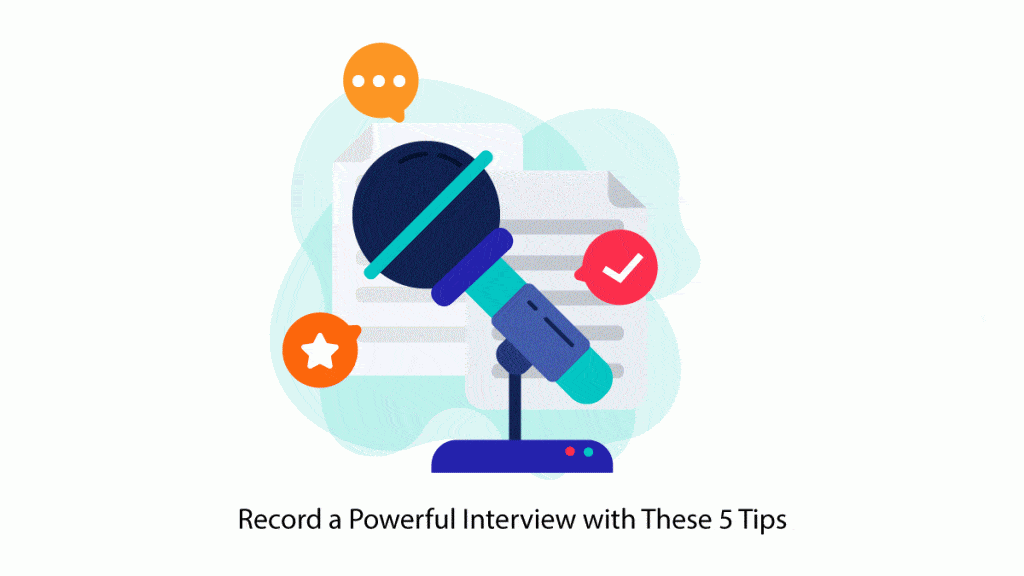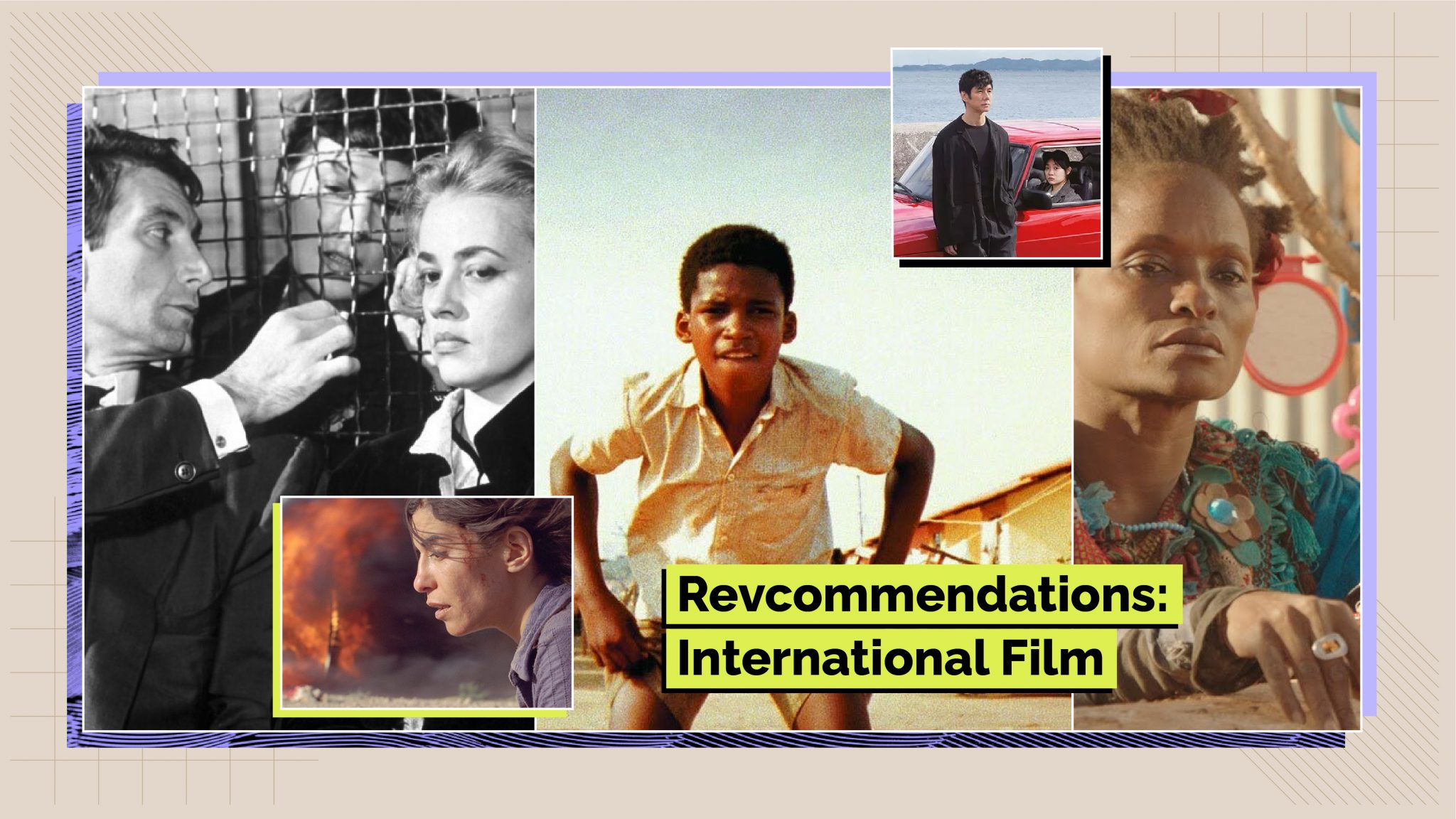Record a Powerful Interview with These 5 Tips

Rev › Blog › Media & Entertainment ›
Video makes up about 65% of all search results. While consumers love video, Google loves video even more. Especially accessible video content. Why? Captions allow online audio to be enjoyed by all, including those with disabilities. Videos with captions are also more likely to be watched the entire way through, increasing the amount of time spent on page.
The key to creating accurate (and engaging) captions comes down to capturing clear and crisp audio. That content can then be easily turned into transcripts, which is just one important step in video accessibility guidelines. Unfortunately, one of the biggest problems of recording is poor audio quality. Below is a guide on how to conduct better meetings and interviews with recording tips and techniques to ensure that top quality audio is always recorded.
Choose the Perfect Recording Device or App
It’s important to think about creating accessible video content right from the start, and that includes selecting the proper tools for execution. Whether you choose a dictation recorder or a smartphone (as long as Rev Voice Recorder app or another highly reviewed dictation recording app is used), both are excellent choices. Rev also offers an online voice recorder that lets you record right in your browser on any device.
Audio Recording Pro-tip: whichever device you choose, it’s important to not only read online reviews but to test the device in the exact recording spot to make sure that the quality is as clear as you need it to be.
Invest in Equipment
An external microphone can help to deliver clear, crisp sound by eliminating inaudible words or the shuffling of papers that might be picked up using just a recording device.
Audio Recording Pro-tip: when using a microphone, make sure all parties involved in the recording process don’t speak directly into it. Always record a few inches away to provide the best and most accurate sound possible. Testing the microphone angle and exact distance will help to capture accessible audio content.
Select the Right Room and Environment
Getting the best-recorded audio for accessibility all comes down to the physical place. Ideally, the perfect recording spot is indoors in a private room. If that isn’t possible, try to find a room that has little to no noise along with little to no echo or reverberation.
Audio Recording Pro-tip: find a room with carpet to ease echoing, chairs moving, and even phones ringing.
Prepare the Equipment
The key to top quality recording top quality results is knowing your equipment:
- Read the instructions. The recorder could have multiple microphones that only work at certain angles or it could have specific settings for different situations. Reading the instructions will help to guarantee the most accurate audio possible. For those app users, make sure to read any how-to guides or tutorials.
- Test all equipment at least two hours before the start of the interview or meeting. This will allow enough time to find and solve any issues that could arise with the equipment.
- Make sure equipment is fully charged and that there are backup batteries and cords in case the battery drains quicker than expected.
- Have a back-up device. Whether you have two recorders or use a smartphone as a backup, when recording a meeting or interview, use two different devices to make sure that you capture the entire length of the interview or meeting. This is especially truly when using a camera. Don’t reply on the sound from that microphone as oftentimes that audio is very hard to hear and translate.
Audio Recording Pro-tip: make sure all recording devices have enough space by uploading all current recordings to the cloud or transfer all large files to a computer or other storage device, then wipe your device clean.
Practice Makes Perfect
Whether you’re looking to ace your next interview or to capture the meeting as accurately as possible for future transcription use, create a game plan:
- Think of key interview components that you’ll need to address before post-production: What visual content will be presented and thus need to be described in detail? What part of the conversation can be scripted? What room details need to be described?
- Dress to impress. Even if you aren’t on camera, looking professional will help boost confidence which in turn will help with straightforward answers and clear sound.
- During the actual recording make sure all speakers state their name, title, and affiliation audibly (even if that means they have to repeat themselves). You can even ask speakers to state the question back to you in their response.
- Create a list of open-ended, strong questions. Also, make sure to practice beforehand to avoid any fumbling.
- Try to avoid two people talking at once. It’s natural for inspiration to spark in the middle of a conversation but it can be a translation nightmare trying to decipher it. If that happens, ask the person to repeat themselves so all thoughts can be easily heard.
- Embrace pauses and silence. While they might appear awkward in the moment, they will actually make the interview and transcription process much easier along with making future video content more accessible and digestible in post-production.
Audio Recording Pro-tip: once you’re done recording, an app like Temi can transcribe it automatically, allowing you to focus on the next step: creating your finished piece.
Wrap-up
Now that crisp and clear audio has successfully been recorded and transcribed, it can easily be translated into captions, graphics, audio descriptions, transcripts, and summaries, any of which are key components to create accessible video content for all.
For every interview or meeting, follow this guide and you’ll get high-quality audio that can be easily transcribed every time.



